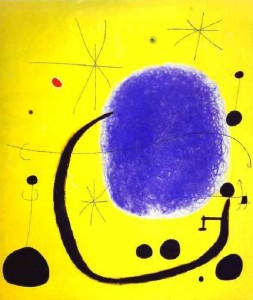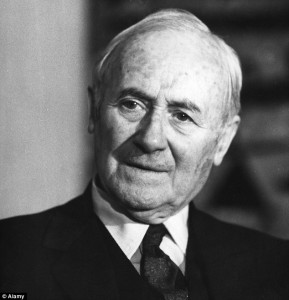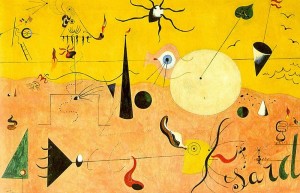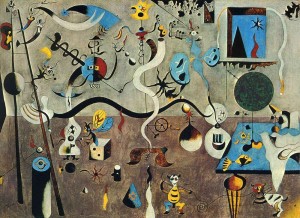Every Thursday, The Art Room will feature an art history lesson and highlight an important modern artist from the past.
Joan Miró is one of Spain’s most celebrated artists who took a unique approach to creation which many have followed for years after his death.
Miró was born in 1893 in the seaport city of Barcelona, Catalonia, a region in northeastern Spain. Much of his work was influenced by his scenic, seaside town and the distinct aquatic style found in the area. His father was a watchmaker and his mother worked as a goldsmith. He was exposed to art his entire childhood, experimenting with various mediums of art from a young age in the home. Some of his work that has been recovered stems back to 1901, when Miro was only 8-years-old.
Before the 1920s, Miró’s work focused on a range of trends he followed in the art world. He used a variety of bright colors which was popular in Fauvism, a trend of art which emphasized a painterly quality and strong colors over representational or realistic values and features. He also added many shapes, a common trait of cubist paintings, and Roman Catholic influences, which he was exposed to as a young boy through Catalan art.
Miró moved to Paris in the 1920s where he experienced surrealism for the first time which caused a change of style in his art. However, he never actually became a member of the Surrealist circle. He retained his own personal, distinct style.
From 1929 through the 1930s, Miró experimented with collages, water colors, engraving, and even did work painting over coppers. From this period came two highly celebrated pieces of art, The Wall of the Moon and The Wall of the Sun.
The most notable period of Miró’s work came from the end of the 1960s and would last up to his death. During this time, he focused on creating more public works of art in the form of monumental pieces and public displays. The were created to specifically be enjoyed by all and to be displayed in numerous locations.

Miró // The Gold of the Azure // 1968
Miró uses contrasting colors and the composition of symbols to create a poetic quality in this piece.
During his final years, Miró became interested in the symbolism behind his works. It wasn’t about the actual image, but the message which the viewer should take away from the piece. The body language and freshness found on his canvases were also a distinct feature of his later works.
Miró died in 1983, leaving behind a legacy and collection of art that will be cherished forever.
To view more of Miró’s work online, click here.



